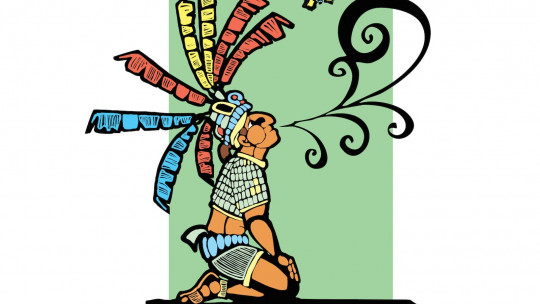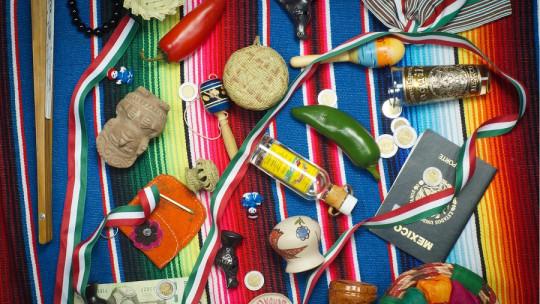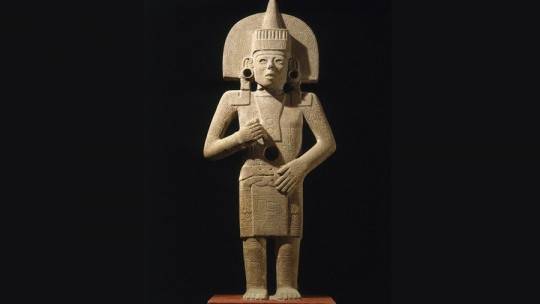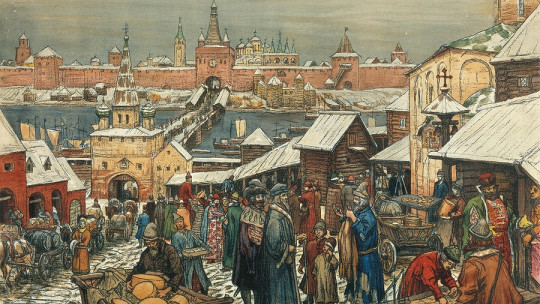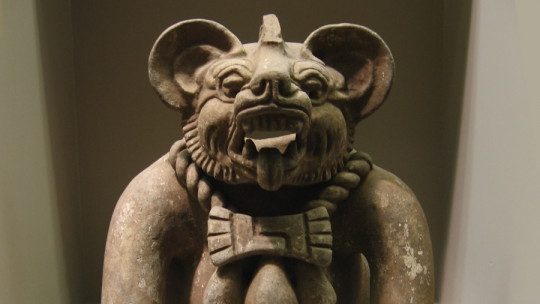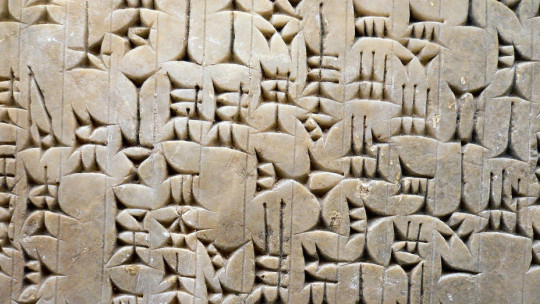There are a great variety of languages throughout the world All of them are a product of the cultural heritage of one or several peoples, possessing different structures and ways of functioning that vary enormously from one another.
Unfortunately, this linguistic wealth has deteriorated over time and many ancient languages have been lost. However others manage to endure, as is the case of Nahuatl which comes from pre-Columbian times (although the dialect has probably changed greatly compared to Mayan times.
What is Nahuatl?
Nahuatl is a living language, although not as well known, used and expanded as others And as with many other languages, a method that can help you acquire vocabulary and fluency is the use of songs, popular sayings and riddles.
It is about the latter that this document is about, throughout which we are going to visualize 33 riddles in Nahuatl in order to train our imaginative capacity and reasoning while expressing some elements of a cultural nature.
A brief collection of riddles in Nahuatl
Below we leave you with a total of 33 riddles in Nahuatl along with their approximate translation through which we can see elements that are part of the heritage, idiosyncrasy and popular knowledge of the descendants of pre-Columbian peoples (although many of them are from modern times).
We can see that many have verbal forms that remind us that we are facing a riddle.
1. Za zan tleino Tepetozcatl quitoca momamatlaxcalotiuh Papalotl
“Through the valley, colorful, it stirs, clapping its hands like someone throwing tortillas”
This brief composition refers to butterflies, colorful and very beautiful animals.
2. Uñijximeajts ajtsaj ximbas salñuwindxey makiejp op saltsankan makiejp ñity
“A leaf wrapped and tied with a palm is my costume. In my body of dough you will find my heart of flesh”
A typical Mesoamerican food with great flavor, the tamale is the answer to this riddle.
3. Se: mosa:sa:ni:ltsi:n íh kípia i:tlah xkípia i:kamak, niman tzoneh
“This is one of your little riddles. It has teeth, it has no mouth, suddenly it’s hairy”
The ear of corn is the answer to this riddle, which identifies the grains with the teeth and the fact of becoming hairy with the state in which the ear is left when eaten.
4. Natyek umbas ñikands umeajts nanbyur ulük nangan mi kej
“A feast you will give yourself… Green on the outside you will see me and black teeth on the inside you will find. You will eat sweet blood from my red heart, will you guess?”
The answer to this riddle is a very refreshing fruit: watermelon.
5. Wa na’atun na’ateche’ na’at le ba’ala’: Jump’éel ts’ool wukp’éel u jool
“Guess, riddle: Seven holes, one pumpkin”
A riddle that refers to the part of our anatomy where our brain is housed: the head. The holes in question correspond to the two ears, the two nostrils, the mouth and the eye sockets.
6. Sa:sa:ni:l! -Te:ntetl! Se: totla:tla:katsi:n nonemi:tia ista:ktsi:n, nowe:ilia xoxo:hke, wan miki chi:chi:ltik
“Riddle!-Bocón! A little man who is born white, grows green and dies red”
This riddle refers to chili, a vegetable that is very popular in South America and highly spicy.
7. Zazan tleino, icuitlaxcol quihuilana, tepetozcatl quitoca. Here quittaz tozazaniltzin, tla ca nenca huitzmalot
“What goes through a valley and carries its guts dragging”
Although it may be complicated to imagine at first glance, the answer is the needle when sewing, since it drags the thread (its “guts”) with it.
8. Maaske mas titlaakatl yes but mitschooktis
“No matter how much of a man you are, it’s going to make you cry”
This simple riddle, which also allows us to see the vision of concepts such as manhood, refers to the onion.
9. Se: tosa:sa:ne:l, se: tosa:sa:ne:l ipan se: kuhtli, tlekowa se: totla:tla:katsi:n ika itambori:tah
“A riddle, a riddle. A little man climbs a tree with his little drum”
On this occasion, we are talking about an insect that carries with it an element that is reminiscent of a drum, or its house: we are talking about a snail.
10. Se: tosa:sa:ne:l, se: tosa:sa:ne:l ipan se: lo:mah we:yak, ika ontlami ompakah o:me yeyekako:ntli
“A riddle, a riddle. On a long hill there, where it ends, there are two caves from which air comes out”
Although it is quite visual, this riddle is based on the description of a nose.
11. Mimixtlamotsi, mimixtlamotsi, itik se tekorral nitotitok se kichkonetl
“Behind a stone fence there is a child dancing”
If we think that the stone fence is our teeth, it will be easy to understand that this riddle refers to the tongue.
12. Se: tosa:sa:ne:l, se: tosa:sa:ne:l mokwitlapan weyákia, moyekapan tso:liwi
“A riddle, a riddle. Behind your back it lengthens, in front of you it shortens.”
The answer to this riddle is the path: as we follow it, we leave more and more behind and shorten the distance to our destination. In a symbolic way it could also represent life.
13. See tosaasaanil, see tosaasaanil. Maaske mas tikasisneki xkeeman tikasis
“No matter how much you want and try, you will never be able to touch it, although you will always see it walking behind you.”
This riddle refers to something that always follows us wherever we go, our shadow.
14. Se: tosa:sa:ne:l, se: tosa:sa:ne:l se: totla:tla:katsi:n ma:sta xtiknekis ipan ticholo:s, ipan ticholotinemis
“A riddle, a riddle. A little man, that for everything you don’t want to step on, you will step on.”
In this case the correct answer is the earth, given that we are always (or rather almost always) in contact with the ground.
15. Se: tosa:sa:ne:l, se: tosa:sa:ne:l ipan se: lo:mah tikontas ye wa:hlaw se: chichi tli:ltik, oksepa tikontas yo:pano:k okse: lo: mah, wan xkimati siawi itlase:ka:wihlo moxtli
“A riddle, a riddle. On the hill you see that a black dog is coming, again you see it and it has already gone to another hill; it never gets tired”
The answer to this somewhat complex riddle is the shadow of a cloud.
16. Awijchiw xik tyiel ndyuk sajrrok tyiel yow atajtüw xik tyiel ndxup sawüñ ütyiw ñipilan
“So that people can get their food in a little hut, I have to dance, after jumping and diving into the sea.”
Since the food in question is obviously fish, we must think of an instrument that can be thrown overboard and can be stored in a basket. The answer is cast nets, lightning bolts or other types of nets.
17. Zazan tleino, xoxouhqui xicaltzintli, momochitl ontemi. Here qittaz tozazaniltzin, tla ca nenca ilhuicatl
“What is a blue gourd, planted with roasted corn, which is called momochtli (something like popcorn)?”
A curious riddle that refers to the night sky, full of stars.
18. Ni cayúnini ma´cutiip i ni cazi´ni ma´ cayuuna ´ ni guiqu iiñenila ma´qué zuuyani
“Guess, guess. He who makes it, does it singing. He who buys it, buys it crying. He who uses it, is no longer seeing it.”
This riddle, on the other hand not very pleasant, reflects how important the concept of death is for many peoples of Mesoamerica. And the riddle refers to a coffin or coffin.
19. Mo apachtsontsajka mitskixtiliya uan axke tikita?
“He takes off your hat and you don’t see it. What is it?”
Brief riddle whose solution is the wind.
20. Zazan tleino quetzalcomoctzin quetzalli conmantica
“Guess the riddle: they have gray hair up to the tip and some green quetzal feathers”
The onion is the answer to this riddle, with its whitish color except in the outermost, greenish layers.
21. Zazan tleino aco cuitlaiaoalli mouiuixoa
“Round at the top and paunchy too, I shake and scream so you can dance.”
This riddle has as its solution a simple musical instrument but widely used in large parties such as Carnival. We are talking about maracas.
22. Se: tosa:sa:ne:l, se: tosa:sa:ne:l. Se: lamatsi:n san ika se: itlantsi:n, kintsatilia je:ntes
“A riddle, a riddle: A little old lady, who with only one tooth yells at people.”
The old lady in question is a metallic instrument that plays to tell us the time or to announce some important event. It’s about the bell.
23. Ñity ayaküw ximal xiel ayaküw xi lyej sanguoch atyily tyety nüty tyiel ximeajts axojtüw ñipilan
“My mind is covered with palm trees. My feet are made of wood. People rest on me, because I stop the sun’s rays.”
It is a bower, a type of natural shelter that is made by intertwining the branches of the trees.
24. Chak u paach, sak u ts’u’
“Red skin, bleached inside.”
The riddle refers to radishes, with a reddish rind and white interior.
25. Lipan se tlakomoli, westok waan nokweptok, para oksee lado.
“To the invited meal, even if it is on a plate and spoon”
In both Central and South America, it is common that one of the most common foods that accompany all or almost all meals are corn tortillas, as essential in the daily diet as bread in most of Europe.
26. Zazan tleino, tezahuilama tlallan tlacuacua.
“What a monstrous old thing, underground, that goes around eating and gnawing?”
The answer to this riddle is a creature capable of living underground and that seems to gnaw while digging. It’s the mole.
27. Wi’ij tu jalk’esa’al, na’aj tu jáala’al
“They carry her hungry. They carry her full.”
The riddle in question tells us about a jar or bucket, which is intended to be full and when they are taken it is to refill them.
28. Zazan tleino, cuatzocoltzin mictlan ommati. Here quittaz tozazaniltzin, tla ca nenca apilolli, ic atlacuihua
“Cantarillo made of wood that knows the region of the dead.”
The answer is a jug of water, probably in reference to the pre-Columbian tradition of throwing corpses into cenotes.
29. Tiá:s ipan kujioh wehka tikne:xti:s se: kujtli pia:stik tlakwa:tipan ye:watok se: wi:lo:tl, tli:non? beli:tah
“You will enter a forest, and far away you will find a straight tree, on its head is sitting a mourning tree, what is it?”
It is neither more nor less than a candle. The tree would be the wax while the hulilote (a type of bird) represents the flame.
30. Tu laame, tu laame de chemená pa me dooxqui’me
“Guess guesser, who has guts on his back that you can even see?”
This is not an obvious riddle, but it refers to shrimp, whose interior can be glimpsed when they are raw.
31. Za zan tleino, Excampa ticalaqui zan cecni tiquiza
“Guess it if you know: naked you enter in three places, dressed in one you come out.”
A simple riddle that refers to a shirt: the three places are the holes for the head and arms.
32. See tosaasaanil, see tosaasaanil. Tias üpan see tepeetl iitlakotian tepeetl tikoneextis san see well
“Will you guess? In the middle of the hill you will find a single well.”
This riddle is based on a part of our body. Specifically, the navel refers to a “well” in the middle of our belly.
33. See tosaasaanil, see tosaasaanil. Maaske mas tikitasneki xwel tikitas
“No matter how much you want and try, you will never be able to look at it, although without any effort you can always touch it.”
This last riddle points us to a part of our body that we cannot visualize normally because it is on our face: the forehead.

